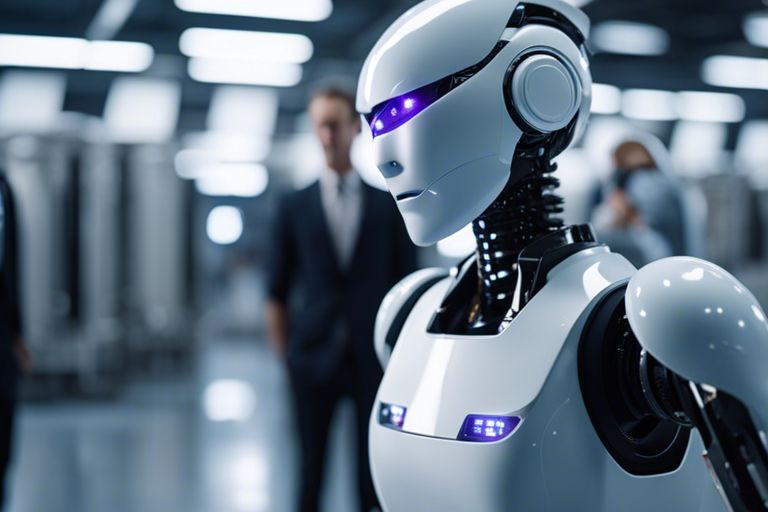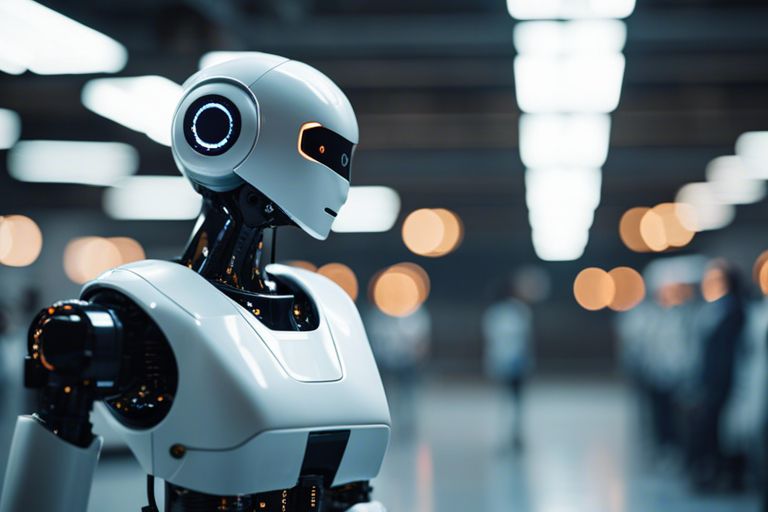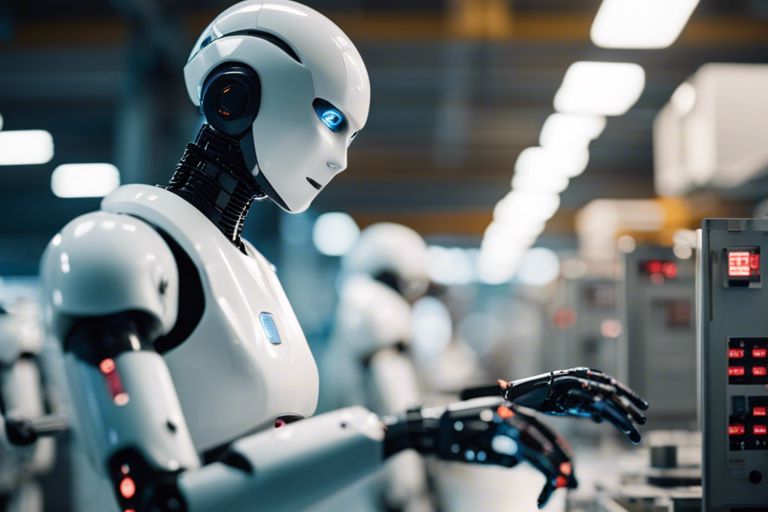Are You Utilizing Cutting-Edge IT Security Strategies For Maximum Protection?
Over recent years, the cyber threat landscape has evolved rapidly, making it crucial for organizations to utilize...

Many industries rely on AI-integrated robotics to streamline processes, increase efficiency, and reduce human errors. In today’s rapidly evolving technological landscape, the synergy between artificial intelligence and robotics is transforming the way businesses operate. Organizations are harnessing the power of AI-driven robotics to achieve enhanced productivity levels that were previously unimaginable. To learn more about how robotics play a crucial role in boosting productivity, check out The Role of Robotics in Enhancing Manufacturing Efficiency.

Obviously, the synergy between Artificial Intelligence (AI) and Robotics has revolutionized the way we perceive automation and productivity. The integration of AI in robotics has unlocked endless possibilities for enhanced efficiency, accuracy, and adaptability in various industries.
Intelligence is at the core of AI in Robotics, enabling machines to mimic human cognitive functions. These principles involve the use of algorithms and data to enable robots to perceive their environment, make decisions, and perform tasks autonomously. Machine learning and neural networks play a crucial role in enabling robots to learn from data and experiences, enhancing their capabilities over time.
Core Robotics Technologies
For robotics to integrate AI successfully, a combination of hardware and software technologies is important. These technologies include sensors for perception, actuators for movement, control systems for coordination, and sophisticated algorithms for decision-making. The seamless integration of these components is vital for the smooth operation of AI-powered robots.
Robotics technologies continue to evolve rapidly, with advancements in computer vision, natural language processing, and motion planning. By leveraging these technologies, AI-powered robots can navigate complex environments, interact with humans, and perform tasks with a high degree of precision and efficiency.
It is evident that AI in Robotics has revolutionized the way automation is achieved in various industries. The integration of artificial intelligence (AI) into robotics has led to significant advancements in the productivity, efficiency, and capabilities of robotic systems.
Processes in robotics have become more intelligent and efficient with the implementation of AI. Robots are now capable of autonomously making decisions, learning from data, and adapting to new situations. This level of automation has streamlined manufacturing processes, reduced errors, and improved overall productivity.
Furthermore, with the incorporation of AI algorithms, robots can optimize their workflows, identify patterns in data, and continuously improve their performance. This enables them to operate with a high level of precision and accuracy, leading to enhanced productivity and cost savings for businesses.
The integration of adaptive learning and predictive analytics into robotics has transformed how robots operate in dynamic environments. The utilization of machine learning algorithms allows robots to analyze vast amounts of data, make real-time decisions, and predict outcomes with a high degree of accuracy.
Plus, by leveraging predictive analytics, robots can anticipate maintenance needs, identify potential issues before they occur, and optimize their operations proactively. This proactive approach not only improves the reliability and uptime of robotic systems but also minimizes downtime and costly repairs.

Now AI plays a crucial role in the field of robotics and automation. To learn more about how AI contributes to the field of robotics and automation, you can check out the discussion on Quora.
On manufacturing floors, AI-driven robotics have revolutionized the production process. With advanced AI algorithms, robots can now perform complex tasks with precision and efficiency that surpass human capabilities. This results in enhanced productivity, reduced errors, and faster turnaround times. In supply chain management, AI helps optimize inventory levels, predict demand, and streamline logistics, leading to cost savings and improved customer satisfaction.
Supplying assistance and support, AI-driven robots have become integral in the service industry and healthcare sectors. These robots can provide 24/7 support, reducing the workload on human employees. In healthcare, robotic technologies assist in surgeries, medication dispensing, and patient care, leading to higher success rates and improved patient outcomes.
Supplying advanced diagnostics, robotic assistants in healthcare can analyze vast amounts of data quickly and accurately, aiding healthcare professionals in making informed decisions and providing personalized treatment plans to patients.
The impact of AI in robotics across various industries is profound. It not only enhances productivity and efficiency but also improves accuracy and reliability in processes. Embracing AI in robotics is crucial for businesses looking to stay competitive and innovative in today’s rapidly evolving landscape.
All too often, the integration of AI in robotics brings forth ethical dilemmas that must be carefully considered. One of the primary concerns is the potential loss of jobs as AI robots become more prevalent in various industries. This shift can lead to unemployment and economic disparities, requiring policymakers to develop strategies to retrain and upskill the workforce to adapt to the changing landscape. Furthermore, there is a need to establish guidelines and regulations to ensure that AI robots operate in an ethical and socially responsible manner, prioritizing the well-being and safety of humans.
Another critical consideration is the impact of AI robots on privacy and data security. As these robots collect and analyze vast amounts of data to improve their performance, there is a risk of unauthorized access or misuse of sensitive information. Safeguards must be put in place to protect individuals’ data and prevent any violations of privacy rights. It is imperative to strike a balance between the benefits of AI in robotics and the protection of ethical values and human rights.
To overcome technical and financial barriers in the adoption of AI in robotics, organizations must invest in research and development to enhance the capabilities and efficiency of AI robots. Advanced technologies such as machine learning and computer vision can optimize robotic processes and increase productivity. Additionally, collaborating with experts in AI and robotics can help organizations navigate complex technical challenges and accelerate innovation in this field.
Financial considerations play a significant role in the implementation of AI robots, as the initial costs of acquiring and deploying these advanced systems can be substantial. Organizations need to conduct cost-benefit analyses to assess the long-term value and ROI of integrating AI in robotics. Securing funding through investments or strategic partnerships can also alleviate financial constraints and facilitate the adoption of AI technologies in robotic applications.
Technical expertise in AI and robotics is crucial for organizations looking to leverage advanced technologies in their operations. Having a skilled workforce that can design, develop, and maintain AI robots is imperative for successful implementation. Training programs and workshops can help upskill existing employees and attract talents with expertise in AI and robotics, ensuring that organizations stay competitive in the rapidly evolving landscape of AI-powered robotics.
Despite the rapid advancements in AI and robotics, the future holds even more promising prospects for their integration. The synergy between artificial intelligence and robotics is set to revolutionize various industries, making operations more efficient and cost-effective.
On the horizon are emerging trends such as machine learning algorithms that enable robots to adapt and learn from their experiences, leading to more autonomous decision-making capabilities. Collaborative robots (cobots) are also gaining traction, working alongside human workers in a harmonious manner to enhance productivity. Additionally, advancements in natural language processing and computer vision are propelling robots towards greater interactivity and understanding of their environments.
Emerging as a pivotal transformation in the workplace, the integration of AI-driven robotics necessitates a proactive approach in preparing the future workforce. Training programs focusing on human-robot collaboration and upskilling employees in managing and working alongside robots will be vital. Developing new roles that leverage the strengths of both humans and robots, as well as redefining job scopes to accommodate these new technologies, will be crucial for a smooth transition.
Emerging technologies like edge computing and blockchain are poised to play a significant role in ensuring the security and seamless integration of AI-driven robots into the workforce. These technologies will not only enhance data processing capabilities but also provide a secure framework for managing interactions between robots and their human counterparts.
Presently, AI in robotics has emerged as a key driver towards achieving enhanced productivity across various industries. By integrating artificial intelligence with robotics, businesses can automate tasks, improve accuracy, and increase efficiency. As technology continues to advance, the potential for AI-powered robotics to revolutionize the way we work and live is immense. Embracing this transformative technology can lead to significant improvements in productivity and competitiveness for organizations willing to invest in it.
A: AI in robotics refers to the use of artificial intelligence technology in designing and programming robots to perform tasks autonomously or with minimal human intervention. It enables robots to sense, think, learn, and act in complex environments, improving their productivity and efficiency.
A: AI enhances productivity in robotics by enabling robots to make real-time decisions, adapt to changing environments, and learn from experience. This enables robots to optimize their performance, and increase accuracy, and efficiency in tasks such as manufacturing, logistics, healthcare, and more.
A: Some key benefits of using AI in robotics for enhanced productivity include increased efficiency and accuracy, reduced operational costs, improved safety in hazardous environments, faster production cycles, and the ability to handle complex tasks that would be challenging for humans. AI-powered robots can also work 24/7 without fatigue, leading to higher productivity levels.
Over recent years, the cyber threat landscape has evolved rapidly, making it crucial for organizations to utilize...
Most businesses today face advanced and sophisticated cyber threats that can potentially jeopardize their data...